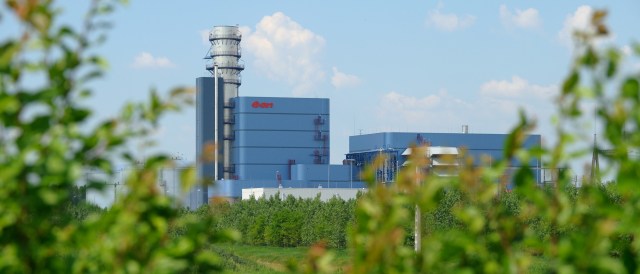The split of German utility E.ON into a “good” and a “bad” part has worrying implications for the larger utilities in Central and Eastern Europe. Jan Ondrich explains.

E.ON is heavily invested in conventional power generation in CEE. In the photo: The Gas-fired Power Plant Gönyü in Hungary. (Source : E.ON)
Here we shall review the significance of E.ON’s divestment of its coal and nuclear assets for the region’s energy firms.
Investors wishing to bet on the failure of the Energiewende, or on the introduction of an across-the-board capacity market to keep conventional capacity online, or as a way to limit carbon credits, now have a choice.
E.ON’s decision may make energy financing more expensive and difficult. Given the choice, investors seeking exposure to continental European coal-based generation will likely choose E.ON’s divested assets rather than those held by CEE power companies.
Here are four reasons why:
First, ‘bad’ E.ON offers all the benefits that come with effective corporate governance. It would be easy to perform meaningful due diligence of E.ON’s assets. Investors could trust the audited annual report. There will be abundant data provided by the company management, making its assessment and verification a straightforward matter.
It is unlikely that the management would embezzle assets, mislead investors or intentionally engage in unprofitable transactions. Such pitfalls are commonplace in CEE power companies.
Second, the stock will be liquid and traded on an exchange with robust rules and strong oversight. This is a considerable competitive advantage. CEE energy firms, if listed at all, trade on local exchanges with weak rules, ineffective oversight and in low quantities. This means that their share price may be manipulated by a handful of traders and exhibiting greater volatility. The high liquidity of ‘bad’ E.ON stock means that investors can enter into new positions and close existing ones at any time and without significantly influencing the share price by doing so.
Third, ‘bad’ E.ON will not be subject to haphazard policy making. Publicly-owned CEE energy firms typically have governments as their dominant shareholders. Weak policy making combined with a lack of transparency and unpredictability together undermine the region’s national energy champions. Investors can no longer rely upon a stable dividend payment policy, with new finance and economy ministers changing existing policy at will.
The state as dominant shareholder may push its energy champion into high risk, loss-making projects, such as investment into new nuclear generation, or it may force it to sell electricity at low, regulated prices for domestic political reasons. Investors in ‘bad’ E.ON will not face the risks ofad hoc decisions by short sighted politicians.
Fourth, and perhaps most important, E.ON publicly discounts the value of its fossil fuel generation. It told the world that it expects growth to come from consumers, distributed power, grids, renewables and innovation, not from generating many megawatt hours in base load fossil fuel power plants. And the world took notice: E.ON’s share price was 14% up on the announcement.
The decision of E.ON’s management is in marked contrast to the recent investment decisions of CEE energy firms, some of which are in the middle of a spending spree to acquire antiquated coal power plants. Others are embarking upon the construction of new coal and nuclear plants.
Following E.ON’s dramatic move away from conventional generation, the financial backers of these regional players will surely now be asking management how it thinks it can deliver better returns on their investment than E.ON. The answer will no doubt become clear in the course of 2015.
Jan Ondřich is a partner in market analysis and advisory firm Candole Partners. He is a regular contributor to this blog.